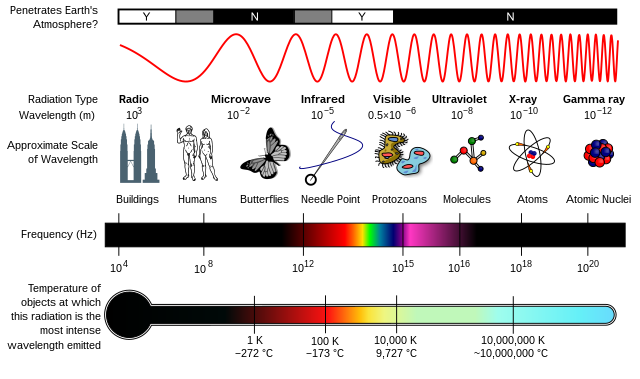- Overview
- Synthetic Telepathy/Silent Communication
- Steady State Visual Evoked Potentials (SSVEP) mobile Electro-Encephalogram (EEG) BCIs
- Cell-Culture BCIs
- BCIs Versus Neuro-Prosthetics
A Brain-Computer Interface (BCI), also known as a Neural-Control Interface (NCI), Mind-Machine Interface (MMI), Direct Neural Interface (DNI), or Brain-Machine Interface (BMI), is direct communication pathway between an enhanced or wired brain and an external device. BCI differs from neuromodulation in that it allows for bidirectional information flow. BCIs are often directed at researching, mapping, assisting, augmenting, or repairing human cognitive or sensory-motor functions.
Research on BCIs began in the 1970s at the University of California, Los Angeles (UCLA) under a grant from the National Science Foundation, followed by a contract from DARPA. The papers published after this research also mark the first appearance of the expression brain—computer interface in scientific literature.
The field Of BCI research and development has since focused primarily on neuro-prosthetics applications that aim at restoring damaged hearing, sight and movement. Thanks to the remarkable of the brain, signals from implanted prostheses can, after adaptation, be handled by the brain like natural sensor or effector channels. Following years of animal experimentation, the first neuro-prosthetic devices implanted in humans appeared in the mid-1990s.
Synthetic Telepathy/Silent Communication
In 2010 the DARPA's budget for the fiscal year included $4 million to start up a program called Silent Talk. The goal was to "allow user-to-user communication on the battlefield without the use of vocalized speech through analysis of neural signals". The program had three major goals: 1) to attempt to identify electroencephalography patterns unique to individual words, 2) ensure that those patterns are generalizable across users in order to prevent extensive device training, and 3) construct a fieldable pre-prototype that would decode the signal and transmit over a limited range.
In a $6.3 million Army initiative to invent devices for telepathic communication, Gerwin Schalk, underwritten in a $2.2 million grant, found the use of Electrocorticography (ECoG) signals can discriminate the vowels and consonants embedded in spoken and imagined words, shedding light on the distinct mechanisms associated with production of vowels and consonants, and could provide the basis for brain-based communication using imagined speech.
In 2002 Kevin Warwick had an array of 100 electrodes fired into his nervous system in order to link his nervous system into the Internet to investigate enhancement possibilities. With this in place Warwick successfully carried out a series of experiments. With electrodes also implanted into his wife's nervous system, they conducted the first direct electronic communication experiment between the nervous systems of two humans.
Research into synthetic telepathy using subvocalization is taking place at the University of California, Irvine under lead scientist Mike D'Zmura. The first such communication took place in the 1960s using EEG to create Morse code using brain alpha waves. Using EEG to communicate imagined speech is less accurate than the invasive method of placing an electrode between the skull and the brain. On 27 February 2013 the group with Miguel Nicolelis at Duke University and IINN-ELS successfully connected the brains of two rats with electronic interfaces that allowed them to directly share information, in the first-ever direct brain-to-brain interface.
Steady State Visual Evoked Potentials (SSVEP) mobile Electro-Encephalogram (EEG) BCIs
In 2009, the NCTU Brain-Computer Interface headband was reported. The researchers who developed this BCl-headband also engineered silicon-based MicroElectro-Mechanical System (MEMS) dry electrodes designed for application in non-hairy sites of the body. These electrodes were secured to the DAQ board in the headband with snap-on electrode holders. The signal processing module measured activity and the Bluetooth enabled phone assessed the patients' alertness and capacity for cognitive performance. When the subject became drowsy, the phone sent arousing feedback to the operator to rouse them. This research was supported by the National Science Council, Taiwan, R.O.C., NSC, National Chiao-Tung University, Taiwan's Ministry of Education, and the U -S. Army Research Laboratory.
In 2011, researchers reported a cellular based BCI with the capability of taking EEG data and converting it into a command to cause the phone to ring. This research was supported in part by Abraxis Bioscience LLP, the U.S. Army Research Laboratory, and the Army Research Office. The developed technology was a wearable system composed of a four-channel bio-signal acquisition/amplification module, a wireless transmission module, and a Bluetooth enabled cell phone. The electrodes were placed so that they pick up Steady State Visual Evoked Potentials (SSVEPs). SSVEPs are electrical responses to flickering visual stimuli with repetition rates over 6 that are best found in the parietal and occipital scalp regions of the visual cortex. It was reported that with this BCI setup, all study participants able to initiate the phone call with minimal practice in natural environments.
Cell-Culture BCIs
Researchers have built devices to interface with neural cells and entire neural networks in cultures outside animals. As well as furthering research on animal implantable devices, experiments on cultured neural tissue have focused on building problem-solving networks, constructing basic computers and manipulating robotic devices. Research into techniques for stimulating and recording from individual neurons grown on semiconductor chips is sometimes referred to as Neuro-Electronics or Neurochips.
BCIs Versus Neuro-Prosthetics
Neuro-Prosthetics is an area of neuroscience concerned with neural prostheses, that is, using artificial devices to replace the function of impaired nervous systems and brain-related problems, or of sensory organs. The most widely used neuro-prosthetic device is the cochlear implant which, as of December 2010, had been implanted in approximately 220,000 people worldwide. There also several neuro-prosthetic devices that aim to restore vision, including retinal implants.
The difference between BCIs and Neuro-Prosthetics is mostly in how the terms are used: Neuro-Prosthetics typically connects the nervous system to a device, whereas BCls usually connect the brain (or nervous system) with a computer system. Practical neuro-prosthetics can be linked to any part of the nervous system—for example, peripheral nerves—while the term "BCI" usually designates a narrower class of systems which interface with the central nervous system.



















